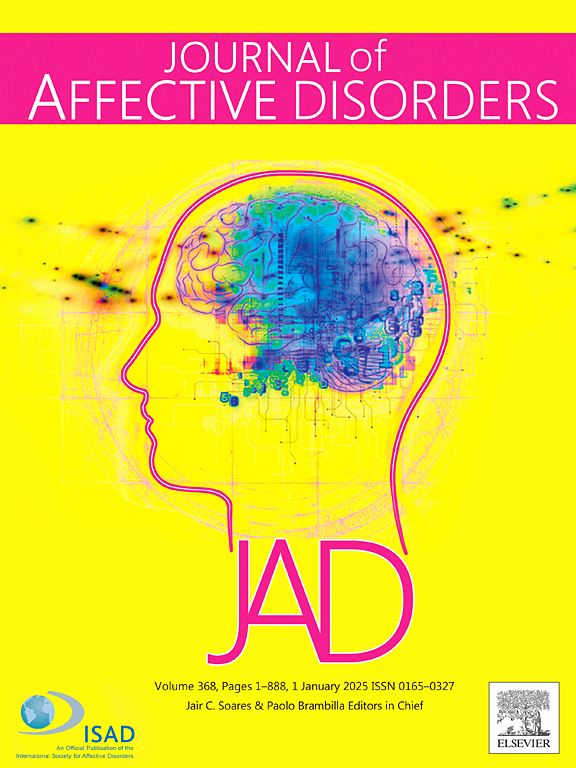Association between adverse perinatal events and postpartum depressive symptoms in a North American prospective preconception cohort study
IF 4.9
2区 医学
Q1 CLINICAL NEUROLOGY
引用次数: 0
Abstract
Background
Identifying risk factors for postpartum depression (PPD) is critical to inform early intervention efforts. This study investigated the impact of adverse perinatal events on PPD.
Methods
We analyzed data from the Pregnancy Study Online (PRESTO), a North American prospective preconception cohort study. Participants (N = 3559) aged 21–45 years completed questionnaires at preconception, during pregnancy, and postpartum. PPD was assessed at six months postpartum using the Edinburgh Postnatal Depression Scale (EPDS). We fit generalized linear models to estimate risk ratios (RRs) and 95 % confidence intervals (CIs) for the associations of adverse perinatal events (preterm birth; birth size for gestational age; infant birthweight; and NICU admission) with PPD (EPDS score ≥ 13), adjusting for confounders including preconception mental health.
Results
A total of 9.8 % reported PPD. Preterm birth (i.e., <37 weeks gestational age; RR = 1.30; 95 % CI: 0.92, 1.82), particularly spontaneous preterm birth (RR = 1.38; 95 % CI: 0.90, 2.10), very preterm birth (<34 weeks; RR = 1.88; 95 % CI: 1.04, 3.35), very low infant birthweight (i.e., <1500 g; RR = 1.67, 95 % CI: 0.77, 3.60), and NICU admission (RR = 1.15; 95 % CI: 0.86, 1.55) were associated with increased PPD risk. Stratified analyses indicated preterm birth was more strongly associated with PPD among parous participants and participants with a history of mental health diagnoses.
Conclusion
Adverse perinatal events were associated with an increased risk of PPD at 6 months postpartum. Early identification and management of depressive symptoms in those who have experienced adverse perinatal events are crucial for improving both parental and infant health outcomes.
求助全文
约1分钟内获得全文
求助全文
来源期刊

Journal of affective disorders
医学-精神病学
CiteScore
10.90
自引率
6.10%
发文量
1319
审稿时长
9.3 weeks
期刊介绍:
The Journal of Affective Disorders publishes papers concerned with affective disorders in the widest sense: depression, mania, mood spectrum, emotions and personality, anxiety and stress. It is interdisciplinary and aims to bring together different approaches for a diverse readership. Top quality papers will be accepted dealing with any aspect of affective disorders, including neuroimaging, cognitive neurosciences, genetics, molecular biology, experimental and clinical neurosciences, pharmacology, neuroimmunoendocrinology, intervention and treatment trials.
 求助内容:
求助内容: 应助结果提醒方式:
应助结果提醒方式:


